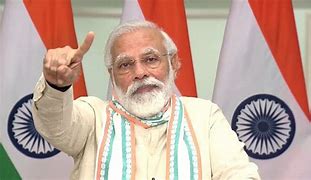Feature
With range of 5000 km, India successfully test-fire nuclear missile Agni-5
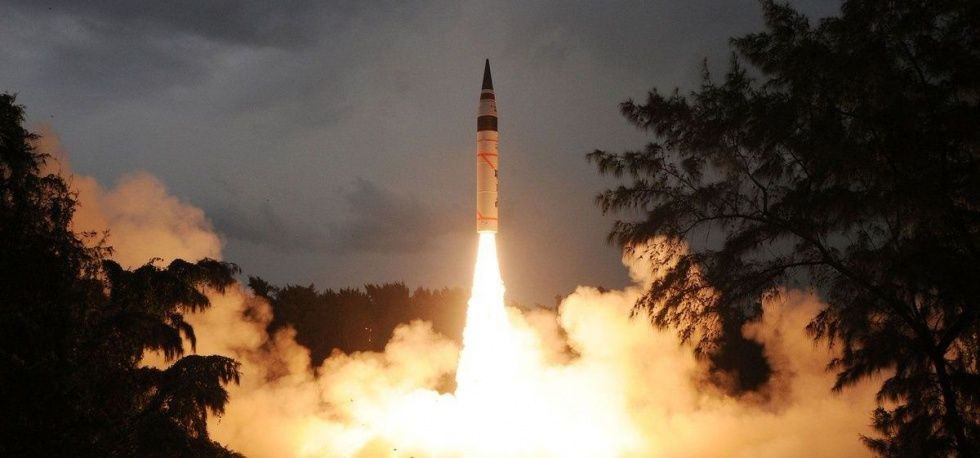
Balasore: India today successfully test-fired indigenously developed nuclear-capable ballistic missile Agni-5, with a strike range of 5,000 km, from a test range off the Odisha coast.
The surface-to-surface missile was fired from a mobile launcher at the Integrated Test Range on Dr APJ Abdul Kalam Island, previously known as Wheeler Island, at 9.45 am, defence sources said.
Describing the flight test from launchpad-4 as successful, a defence press note said, “All the radars, electro-optical tracking stations and telemetry stations tracked the vehicle all through the course of the trajectory. All the mission objectives have been achieved.”
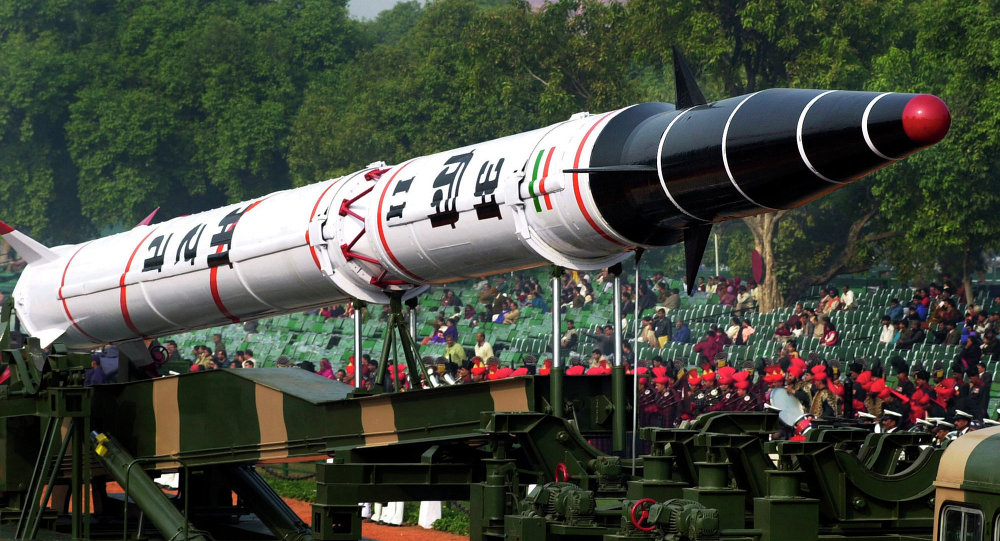
Defence Minister Nirmala Sitharaman congratulated Defence Research and Development Organisation (DRDO) scientists, staff, the armed forces and industries for the success of “A5 Mission,” it added.
This was the sixth trial of the state-of-the-art Agni-5, which covered its full distance during the test.
Unlike other missiles of the series, Agni-5 is the most-advanced in terms of navigation and guidance, warhead and engine, a DRDO official said.
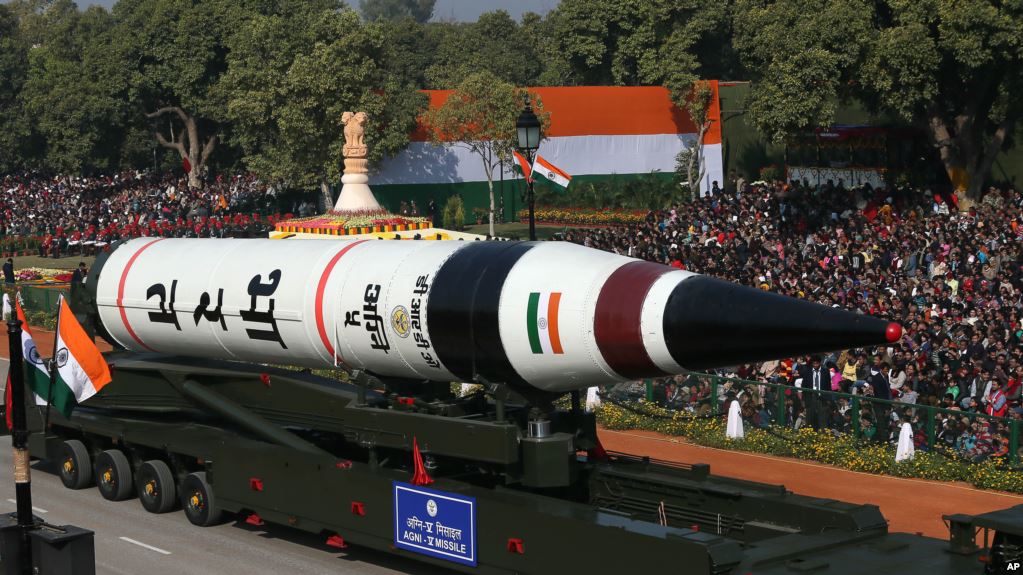
Several new technologies were successfully tested during the Agni-5 trial.
Navigation systems, very-high accuracy Ring Laser Gyro-based Inertial Navigation System and the most-modern and accurate Micro Navigation System ensured the missile reached within a few metres of the target, the official explained.
“The high-speed on-board computer and fault tolerant software, along with robust and reliable bus, guided the missile flawlessly,” he said.
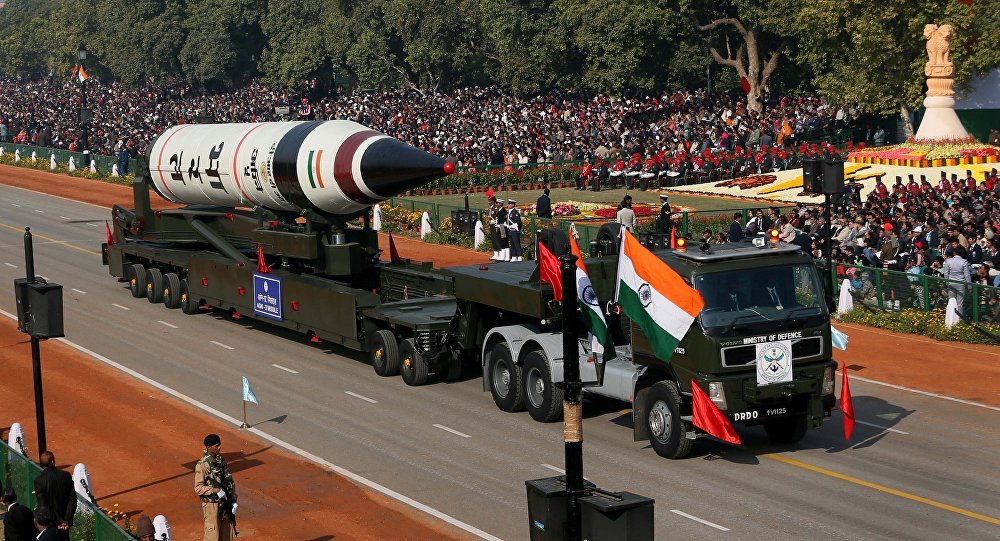
Agni-5, a re-entry vehicle, after reaching the peak of its trajectory turns towards Earth and moves towards the intended target with an increased speed due to the planet’s gravitational pull. The missile’s path is directed precisely by the advanced on-board computer and inertial navigation system.
India successfully test-fired nuclear missile Agni-5 with range of 5,000 km:
As the missile enters Earth’s atmosphere, the atmospheric air rubbing its skin during the re-entry phase raises the temperature beyond 4,000 degrees Celsius, sources said.
However, the indigenously designed and developed carbon-carbon composite heat shield provides thermal protection to the payload by maintaining the temperature inside the vehicle below 50 degrees Celsius, they said.
The missile has been designed to hit the designated target point accurately, guided by the on-board computer with the support of a Ring Laser Gyro-based Inertial Navigation System, the Micro Inertial Navigation System, fully-digital control system and advanced compact avionics, they said.
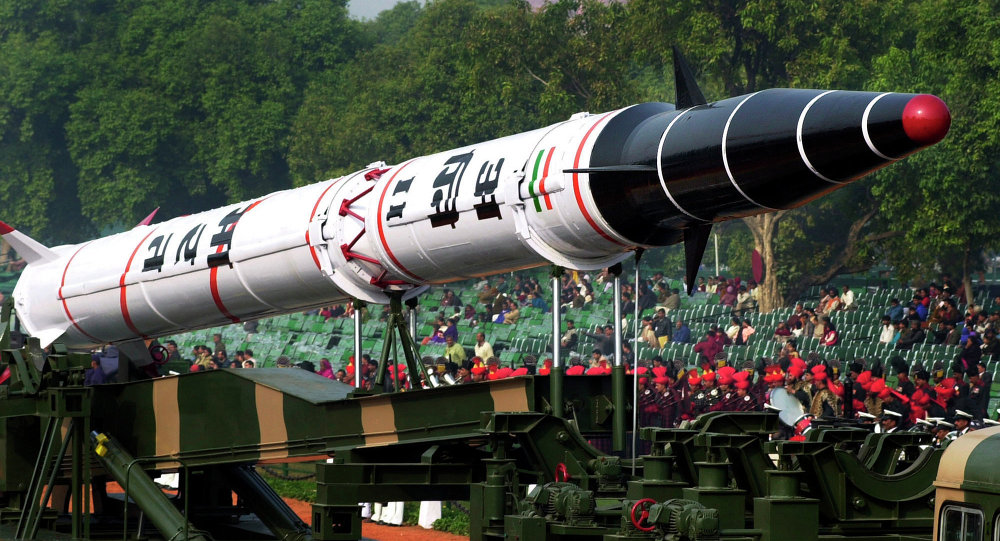
Ships located in mid-range and near the target point, tracked the vehicle and witnessed the final event. Radars and electro-optical systems on the path monitored all parameters of the missile and displayed in real time, they added.
The first two flights of Agni-5 in 2012 and 2013 were in open configuration.
The third, fourth and fifth launches were from canister integrated with a mobile launcher, in its deliverable configuration to enable launch of the missile with a very short preparation time as compared to an open launch.
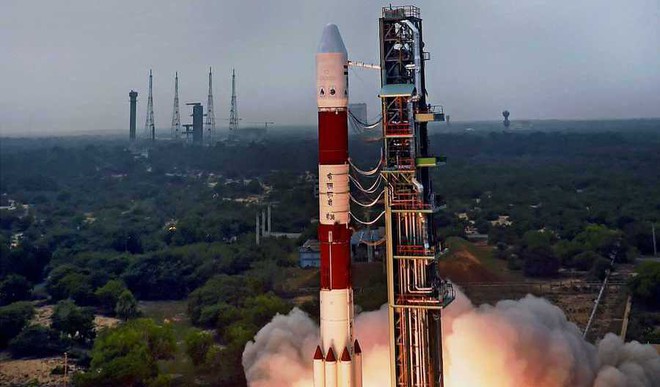
It also has advantages of higher reliability, longer shelf life, less maintenance and enhanced mobility, the sources said.
India has in its armoury the Agni series – Agni-1 with 700 km range, Agni-2 with a 2,000-km range, Agni-3 and Agni-4 with 2,500 km to more than 3,500-km range.
The first test of Agni-5 was conducted on April 19, 2012, the second on September 15, 2013, the third on January 31, 2015 and the fourth on December 26, 2016.
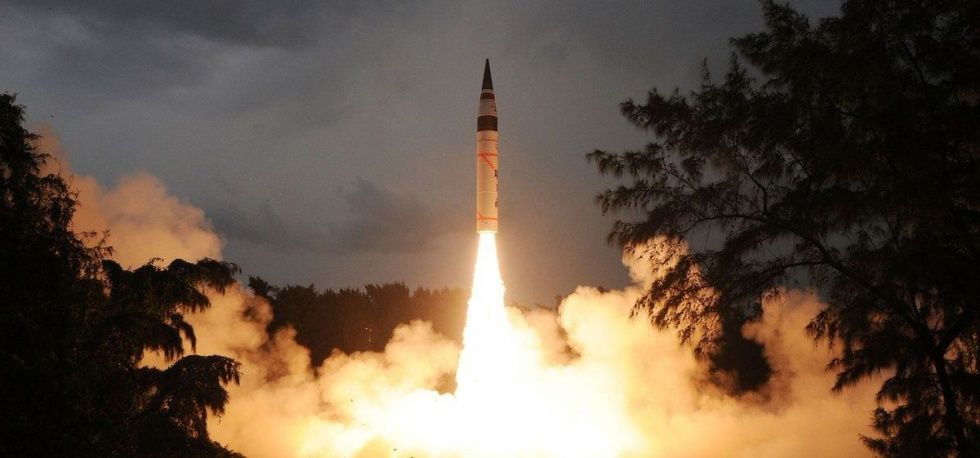
The fifth test was held on January 18 this year. All the five trials were successful.
Entertainment
Meghalaya Reserves Legalized Gambling and Sports Betting for Tourists

The State Scores Extra High on Gaming-Friendly Industry Index
Meghalaya scored 92.85 out of 100 possible points in a Gaming Industry Index and proved to be India’s most gaming-friendly state following its recent profound legislation changes over the field allowing land-based and online gaming, including games of chance, under a licensing regime.
The index by the UK India Business Council (UKIBC) uses a scale of 0 to 100 to measure the level of legalisation on gambling and betting achieved by a state based on the scores over a set of seven different games – lottery, horse racing, betting on sports, poker, rummy, casino and fantasy sports
Starting from February last year, Meghalaya became the third state in India’s northeast to legalise gambling and betting after Sikkim and Nagaland. After consultations with the UKIBC, the state proceeded with the adoption of the Meghalaya Regulation of Gaming Act, 2021 and the nullification of the Meghalaya Prevention of Gambling Act, 1970. Subsequently in December, the Meghalaya Regulation of Gaming Rules, 2021 were notified and came into force.
All for the Tourists
The move to legalise and license various forms of offline and online betting and gambling in Meghalaya is aimed at boosting tourism and creating jobs, and altogether raising taxation revenues for the northeastern state. At the same time, the opportunities to bet and gamble legally will be reserved only for tourists and visitors.
“We came out with a Gaming Act and subsequently framed the Regulation of Gaming Rules, 2021. The government will accordingly issue licenses to operate games of skill and chance, both online and offline,” said James P. K. Sangma, Meghalaya State Law and Taxation Minister speaking in the capital city of Shillong. “But the legalized gambling and gaming will only be for tourists and not residents of Meghalaya,” he continued.
To be allowed to play, tourists and people visiting the state for work or business purposes will have to prove their non-resident status by presenting appropriate documents, in a process similar to a bank KYC (Know Your Customer) procedure.
Meghalaya Reaches Out to a Vast Market
With 140 millions of people in India estimated to bet regularly on sports, and a total of 370 million desi bettors around prominent sporting events, as per data from one of the latest reports by Esse N Videri, Meghalaya is set to reach out and take a piece of a vast market.
Estimates on the financial value of India’s sports betting market, combined across all types of offline channels and online sports and cricket predictions and betting platforms, speak about amounts between $130 and $150 billion (roughly between ₹9.7 and ₹11.5 lakh crore).
Andhra Pradesh, Telangana and Delhi are shown to deliver the highest number of bettors and Meghalaya can count on substantial tourists flow from their betting circles. The sports betting communities of Karnataka, Maharashtra, Uttar Pradesh and Haryana are also not to be underestimated.
Among the sports, cricket is most popular, registering 68 percent of the total bet count analyzed by Esse N Videri. Football takes second position with 11 percent of the bets, followed by betting on FIFA at 7 percent and on eCricket at 5 percent. The last position in the Top 5 of popular sports for betting in India is taken by tennis with 3 percent of the bet count.
Local Citizens will Still have Their Teer Betting
Meghalaya residents will still be permitted to participate in teer betting over arrow-shooting results. Teer is a traditional method of gambling, somewhat similar to a lottery draw, and held under the rules of the Meghalaya Regulation of the Game of Arrow Shooting and the Sale of Teer Tickets Act, 2018.
Teer includes bettors wagering on the number of arrows that reach the target which is placed about 50 meters away from a team of 20 archers positioned in a semicircle.
The archers shoot volleys of arrows at the target for ten minutes, and players place their bets choosing a number between 0 and 99 trying to guess the last two digits of the number of arrows that successfully pierce the target.
If, for example, the number of hits is 256, anyone who has bet on 56 wins an amount eight times bigger than their wager.






